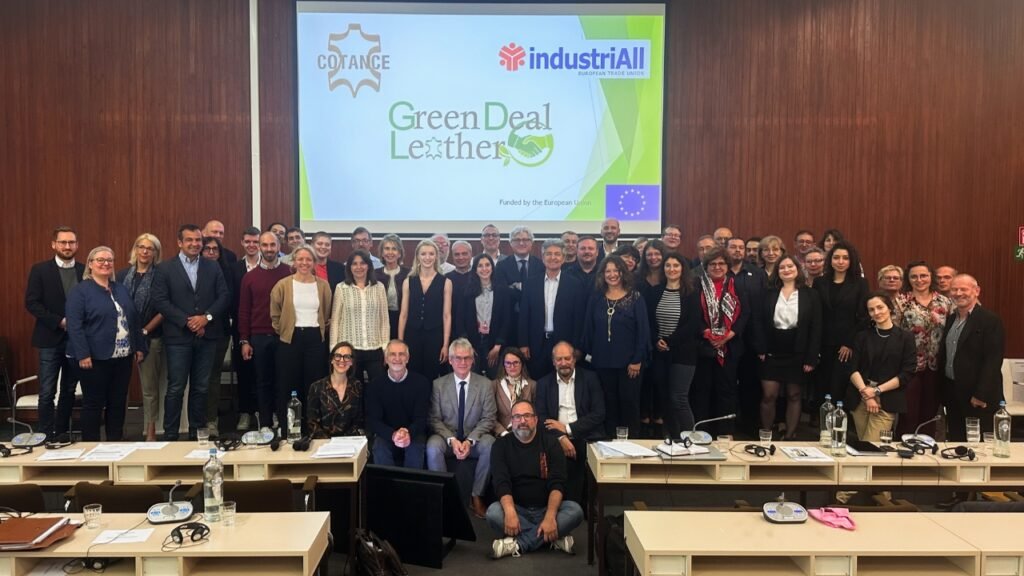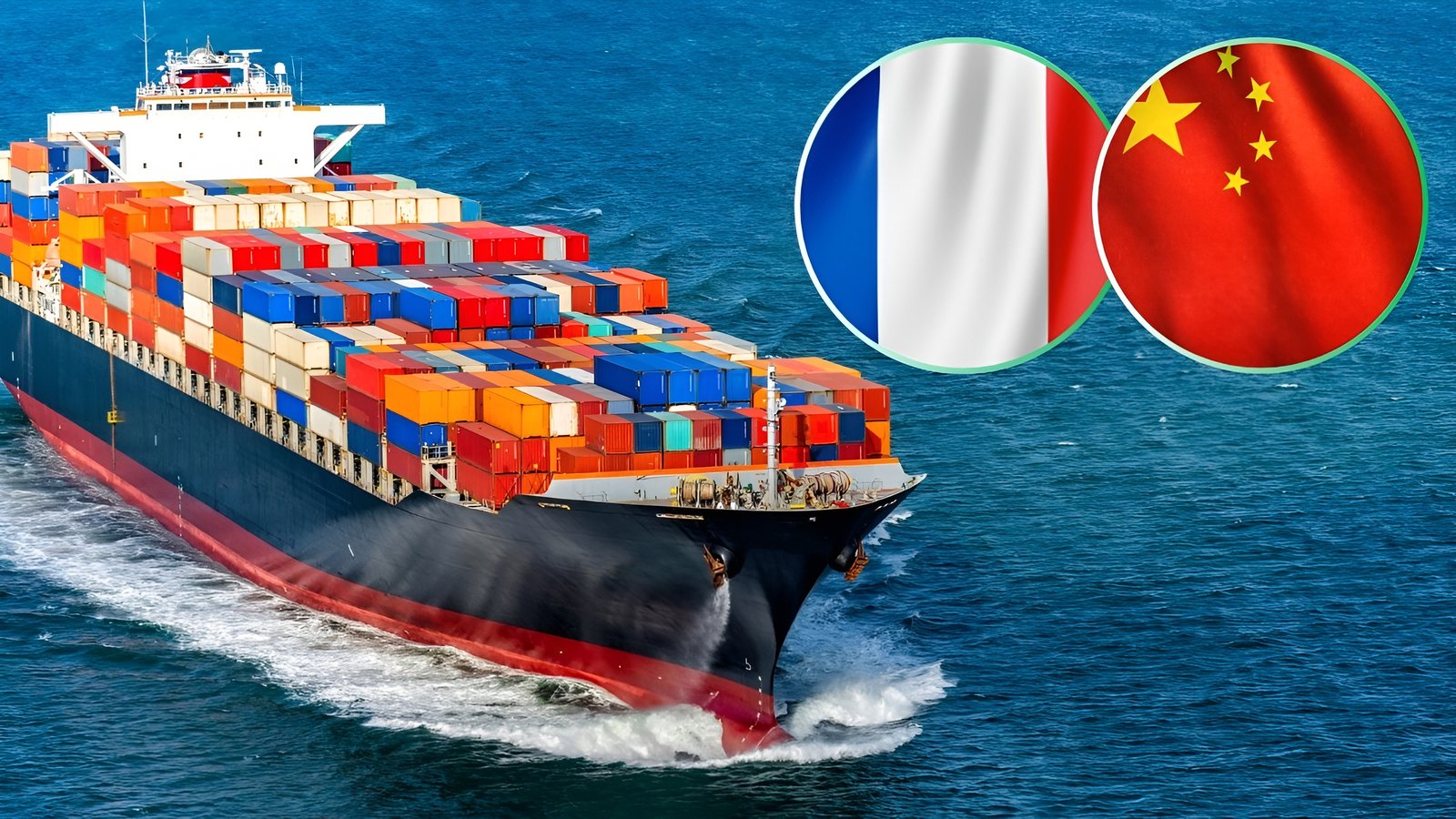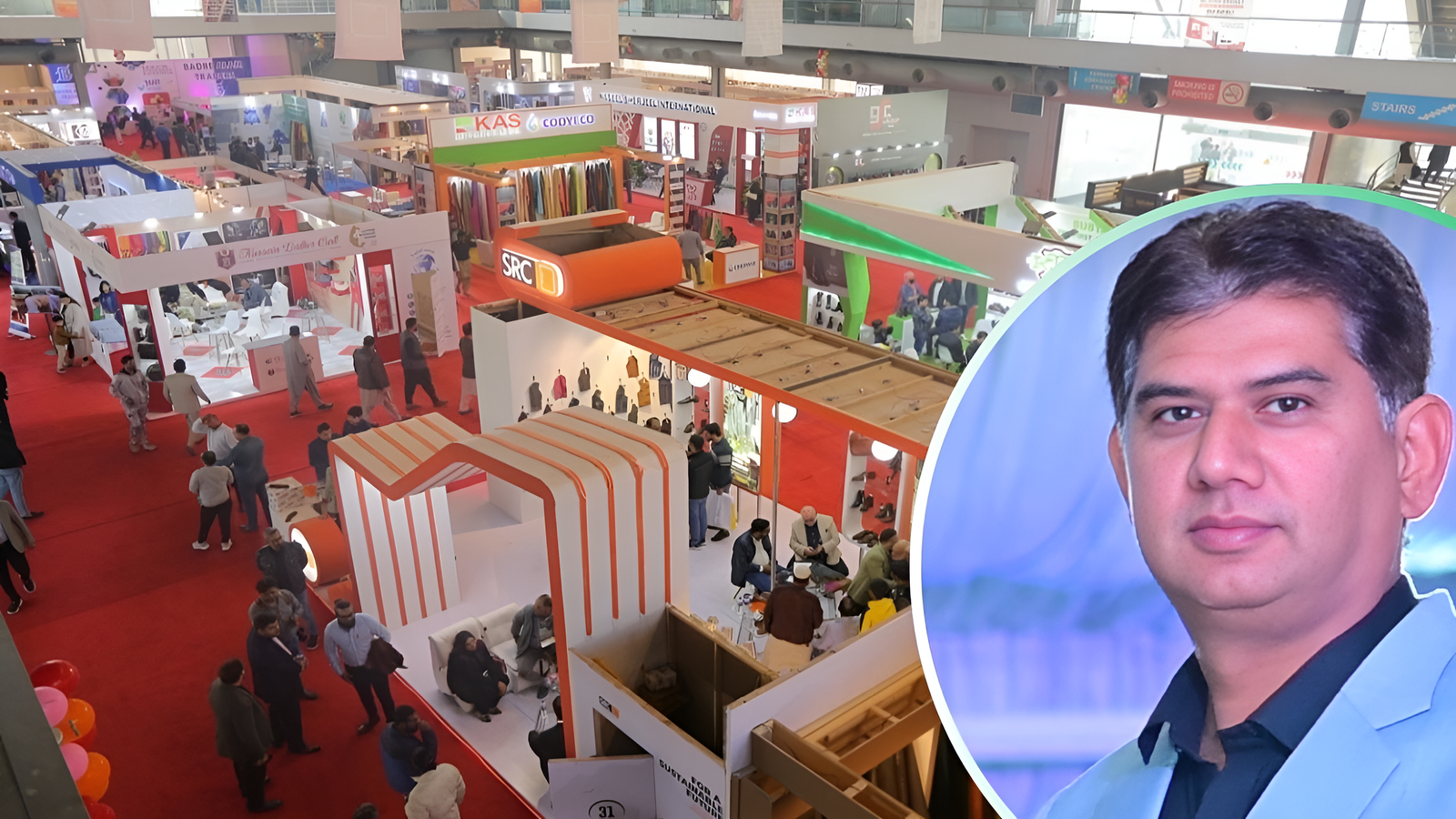The European Tanning and Leather social partners, COTANCE and industriAll Europe, have successfully concluded the Green Deal Leather (GDL) Final Conference in Brussels, May 2024. This event marked the culmination of a two-year, EU-funded social dialogue project titled “Towards Zero Adverse Impact of the European Leather Industry – GREEN DEAL LEATHER”. The conference drew around 100 attendees, including national representatives from Spain (ACEXPIEL), Portugal (APIC), France (FFTM), Hungary (MKZS), Italy (UNIC), Germany (VDL), and Austria (FVTBSL).
The conference commenced with an address by Judith Kirton-Darling, Secretary General of industriAll Europe.
Judith Kirton-Darling, Secretary General of IndustriAll Europe.
We aim to make the leather sector as green as possible while maintaining excellent occupational health and safety standards emphasizing the rich tradition of high-quality leather production in Europe and the industry’s commitment to sustainability. She also stressed the importance of continuous training and checks are crucial to achieving a sustainable and accident-free industry.
Through the Green Deal Leather project, we are equipping European tanners with the necessary tools and intelligence to move towards a sustainable future. Transparency is essential to advancing our social and environmental credentials and dispelling common misconceptions about leather.
Manuel Rios, President of COTANCE
Following the opening remarks, COTANCE Secretary General, Gustavo González-Quijano, introduced the GDL project. Two significant studies were presented through infographic videos:
- “Injuries/Incidents at the Workplace”: This study, released at Lineapelle/Milan in September 2023, provided representative data on tannery workplace safety in the EU.
- “The Carbon Footprint of European Bovine Leather”: Presented at the Final Conference in Brussels, this study explored the carbon footprint of leather production.
Key Findings of the Study
Workplace Safety Improvements
The data revealed a significant decline in tannery-related accidents across surveyed EU countries (Italy, Spain, France, Germany, Portugal, Hungary, and Austria). Accidents decreased by 16%, from 1,317 in 2019 to 1,102 in 2021. Despite this improvement, the incidence rate of 3.2% in 2021, with 15% occurring during commutes and over 90% being minor accidents, indicates ongoing opportunities for enhancing workplace safety.
Environmental Impact and Carbon Footprint
Calculating leather’s carbon footprint is complex, involving detailed analysis of the tanning industry and its processes. The ECO2L method, used in the study, indicated an average carbon footprint of 8kg of CO2 per m² of bovine leather. This figure varies based on leather thickness and performance requirements. Notably, the study highlighted that leather’s environmental impact is more significantly influenced by livestock breeding and chemical use rather than the tanning process itself.
Panel Discussions: Social Sustainability and Industry Expertise
The conference featured two expert panels, providing deep insights into the leather industry’s future.
First Panel: Social Sustainability
Moderated by Elspeth Hathaway of industriAll Europe, the first panel included:
- Agostino Apolito, Director General of Assomac
- Beatriz Mello da Cunha, Specialist at the ILO
- Javier Uson Montesinos, Representative at UGT-FICA
- Sabrina Frontini, Director of ICEC
Panelists emphasized the importance of prevention strategies, including health and safety certification, training, PPE, and active worker involvement, to enhance workplace safety. They stressed the role of quality social dialogue in addressing workplace issues and ensuring worker safety. Additionally, they highlighted the need to attract young people to the industry by showcasing its safety, green practices, and circular economy potential.
Second Panel: Industry Expertise
The second panel, moderated by Christian Baio, Sustainability & Business Development Manager at Spin360°, included:
- Dr. Francesco Troisi, Head of the CERIS srl Analytical Laboratory and member of the UNPAC Technical Commission
- Andreas Meyer, Managing Director of VDL
- Ivan Kral, Industrial Development Officer of UNIDO
- Guido Zilli, ESG Manager of Gruppo Mastrotto
This panel built on previous achievements and discussed leather’s inherent sustainability, including its durability and life-cycle assessment. Ivan Kral highlighted leather’s suitability for the circular economy, while Guido Zilli addressed the challenges posed by the EF methodology and its penalizing effects on the industry. The introduction of the ECO2L carbon footprint calculation tool marked a significant step towards harmonizing approaches and increasing transparency in the industry. Future developments will focus on aspects like durability, natural content, and reparability, enabling accurate comparisons of materials and their true environmental footprints.
The Final Conference of the Green Deal Leather project highlighted the significant progress made over the past two years. The collaborative efforts of the European leather industry’s social partners have produced valuable data that will benefit the sector globally. By fostering social dialogue, the European leather industry continues to develop tools and intelligence that enhance worker safety, protect the environment, and promote sustainable, high-quality leather. This project supports millions of jobs worldwide and sets a benchmark for sustainable practices in the industry.
The Green Deal Leather project underscores the importance of continued collaboration and innovation to achieve a sustainable and thriving leather industry. As the industry moves forward, these efforts will be crucial in maintaining Europe’s leadership in high-quality, environmentally responsible leather production.












